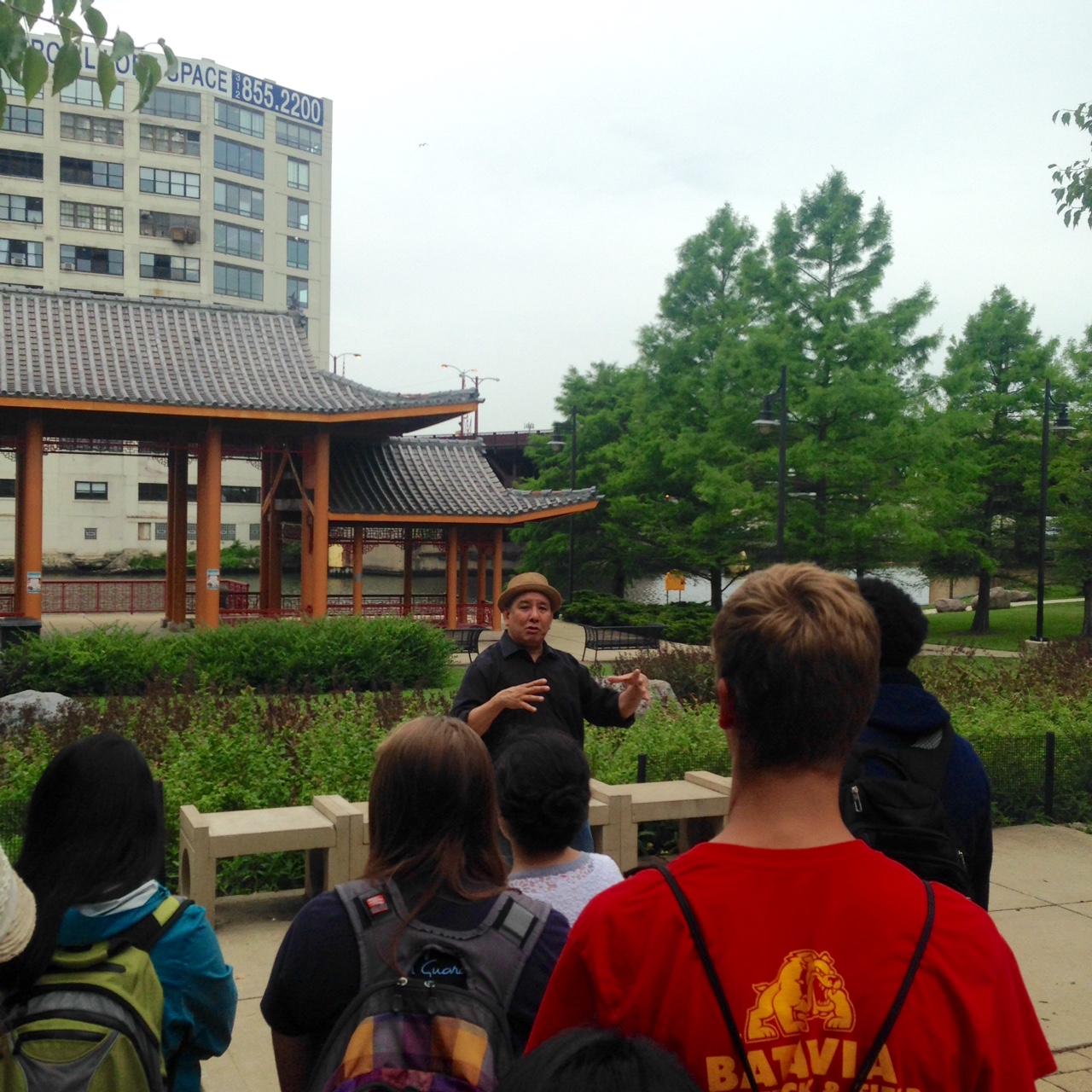Forty-five high school students from across the seven-county region participated in the eighth session of Future Leaders in Planning (FLIP) spending July 10-17, 2015, learning about the many aspects of resilience and how it relates to planning.
The program began on Friday, July 10, with a retreat at the CMAP office that prepped the students for the week. Students started the day with a scavenger hunt in downtown Chicago and looked for items such as LEED plaques, bioswales, and Divvy bike docks. A panel of six urban planners representing various aspects of the field talked to students about the challenges of their work, typical projects, and what they like most about their jobs. The students then applied the lessons of the day during FLIPville, an interactive activity designed to show how planning works at the local level.
On Monday, July 13, students took a field trip to the City of Chicago's Pullman neighborhood that included tours of the Method Soap LEED-platinum factory and the neighborhood itself. Students saw the 75,000-square-foot hydroponic farm being built on the Method factory roof that will grow organic produce, and the native plants that have reclaimed a formerly contaminated site. The experience highlighted the challenges and opportunities of restoring and reinvigorating a community.
The following day's session focused on gray versus green infrastructure and how to plan for all of the region's residents. Students toured the Stickney Water Reclamation Plant where hundreds of millions of gallons of water is collected and treated daily and went 300-feet underground to see the plant's work in action. Water engineers spoke about how gray infrastructure keeps the region dry, and green infrastructure helps in offsetting stormwater overflows. The day concluded with a visit to the Brookfield Zoo where students learned about social innovation programming that allows those with disabilities to learn about and interact with animals.
Students traveled to The Plant, a vertical farm and food business incubator in the City of Chicago's Back of the Yards neighborhood for the third FLIP session. They learned about aquaponics and saw how a variety of businesses operate in the space while learning about how and why minimizing waste from the food supply chain is important. In the afternoon, the students went to Union Station to see the Joseph C. Szabo Chicago Control Center and returned to CMAP for a routing exercise that challenged them to consider why a city needs a resilient transportation system to meet the disparate needs of its residents. Finally, the students spoke with a representative from the City of Chicago Office for People with Disabilities to continue learning about the importance of building inclusive cities. This year is the 25th Anniversary of the Americans with Disabilities Act.
On Thursday, FLIP students took the Chicago Water Taxi to the City's Chinatown neighborhood and visited Ozinga, a concrete plant, to learn about its role in developing the built environment. The Metropolitan Planning Council joined CMAP for the day to educate the students about its Great Rivers Chicago campaign and the Chicago River's historic role in the City's development. The students then explored Ping Tom Park with SiteDesign landscape architects and learned that the neighborhood previously lacked of green space and the park revived an unused, industrial stretch of the river.

On the final day of FLIP, the students spent time reflecting on their experiences and sharing with CMAP staff as to how planners can better engage the region's youth in their work. Students worked collaboratively on poster presentations to summarize what they've learned and shared ideas about what resiliency means to the region. Many thanks to CMAP partners who hosted, presented, and shared with the students during the week.